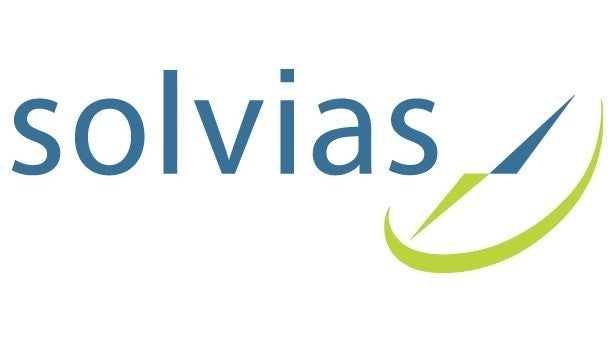Solvias is pleased to announce that it is taking an interest in the increasing focus on genotoxic impurities.
Following the 2018 detection of nitrosamines in several angiotensin II receptor blockers (ARBs) — commonly known as sartans — as well as other active ingredients, regulatory authorities have introduced strict new manufacturing requirements and are asking marketing authorisation holders (MAHs) to take precautionary measures to avoid the risk of nitrosamine impurities in medicines. In 2019 several recalls were issued in the US for drug products containing the drug substance ranitidine, a histamine H2 receptor blocker; in early 2020, a Canadian drugmaker recalled certain lots of an extended-release formulation of metformin (APO-Metformin ER), a drug used to control type II diabetes.
In September 2019, the human medicines committee of the European Medicines Agency (EMA) requested that MAHs for human medicines containing chemically synthesised active substances review their manufacturing processes, perform a risk evaluation and mitigate any potential risk of nitrosamine impurities. If a risk of nitrosamines is identified, confirmatory testing should be carried out using appropriately validated and sensitive methods. This must be completed within three years of the publication of the call for review. If nitrosamines are detected in any medicines, the MAH must inform authorities promptly so that appropriate regulatory actions can be taken.
The completion date for the risk evaluation was initially postponed from March 2020 to September 2020. In the last update of August 3, 2020, the deadline was again extended to March 31, 2021. In addition, the call for review was extended to all biological medical devices.
The US Food and Drug Administration (FDA) has also recently published guidelines for controlling nitrosamine impurities. They correspond in many aspects to the EMA guidelines with a 3-step-procedure that includes a risk assessment followed by an analytical review of the identified risk substances and measures (changes in the manufacturing process) to reduce or eliminate contamination. Unlike the EMA Call for Review, however, these are only recommendations. Thus, manufacturers are not obliged to submit their risk evaluations to the authorities but should be able to submit them upon request. For marketed products, the FDA recommends completing the risk evaluation by March 2021, while analytical reviews and updates to regulatory submissions should be completed by September 2023.
Nitrosamines may be formed when sodium nitrite or other nitrosating agents are used in an acidic environment in the presence of secondary or tertiary amines or quaternary ammonium salts often found in reagents, solvents and APIs. Other potential sources are contaminated raw material, use of recovered materials and cross-contamination. Nitrosamines, present in some foods and water supplies, have been classified as probable human carcinogens: long-term exposure above certain levels may increase the risk of cancer. It is therefore essential that steps be taken to eliminate the presence of such cancer-causing substances in medicines.
Several methods have been published by the FDA to cover the nitrosamines NDMA and NDEA in different sartans. EMA has indicated the extension of measures to include more nitrosamines. Solvias has been involved in the analysis and detection of nitrosamines since their initial discovery as contaminants in drug compounds and is able to quantify all major types of nitrosamines.
As with all genotoxic impurities, the analysis of nitrosamines can be challenging. Ultra-low levels of these impurities must be quantified in diverse and complex matrices. The developed methods then need to be validated to conform to good manufacturing practice (GMP) requirements.
“Solvias is one of the few companies with the capability to correctly quantify six nitrosamines in ppb range with a single generic method while also providing generic screening for all genotoxic impurities potentially present in active pharmaceutical ingredients and drug products,” says Karl Abele, Project Manager Extractables & Leachables (E&L). “We also offer solutions for potential impurities for which no reference materials are available based on our successful use of semi-quantification in HRAM-LC/MS screening in E&L projects.”
The company’s new proprietary test method for the generic screening of nitrosamines in API and drugs is designed to generate supporting data for risk evaluation in a short time frame, e.g. in high throughput screening (HTS), and to quickly determine whether or not further testing is necessary when a risk of contamination cannot be excluded. In some cases, this testing can substitute for the laborious and time-consuming matrix-specific development and validation of a quantitative method.
Solvias offers a comprehensive portfolio of analytical techniques and dedicated teams specialising in Extractables & Leachables and Genotoxic Impurities. Our experts deploy LC-HRAMS, LC-MS/MS as well as GC-MS/MS for organic trace analysis, methods that are also used in the EMA and FDA methods. With highly qualified personnel and state-of-the-art equipment — ThermoFisher Scientific Q-Exactive Orbitrap, LC-MS/MS and GC-MS/MS, controlled by fully GMP-compliant Chromeleon software — we can respond quickly and efficiently to our customers’ needs. Our mass spectrometry is embedded in a network of complementary techniques that enable us to offer comprehensive solutions from a single source. In the case of nitrosamine problems, for example, we can use ion chromatography to help identify sources of nitrite impurities in excipients that can contribute to the formation of nitrosamines
To learn more about how Solvias can help you meet these challenges, please fill out the enquiry form attached to this page.

